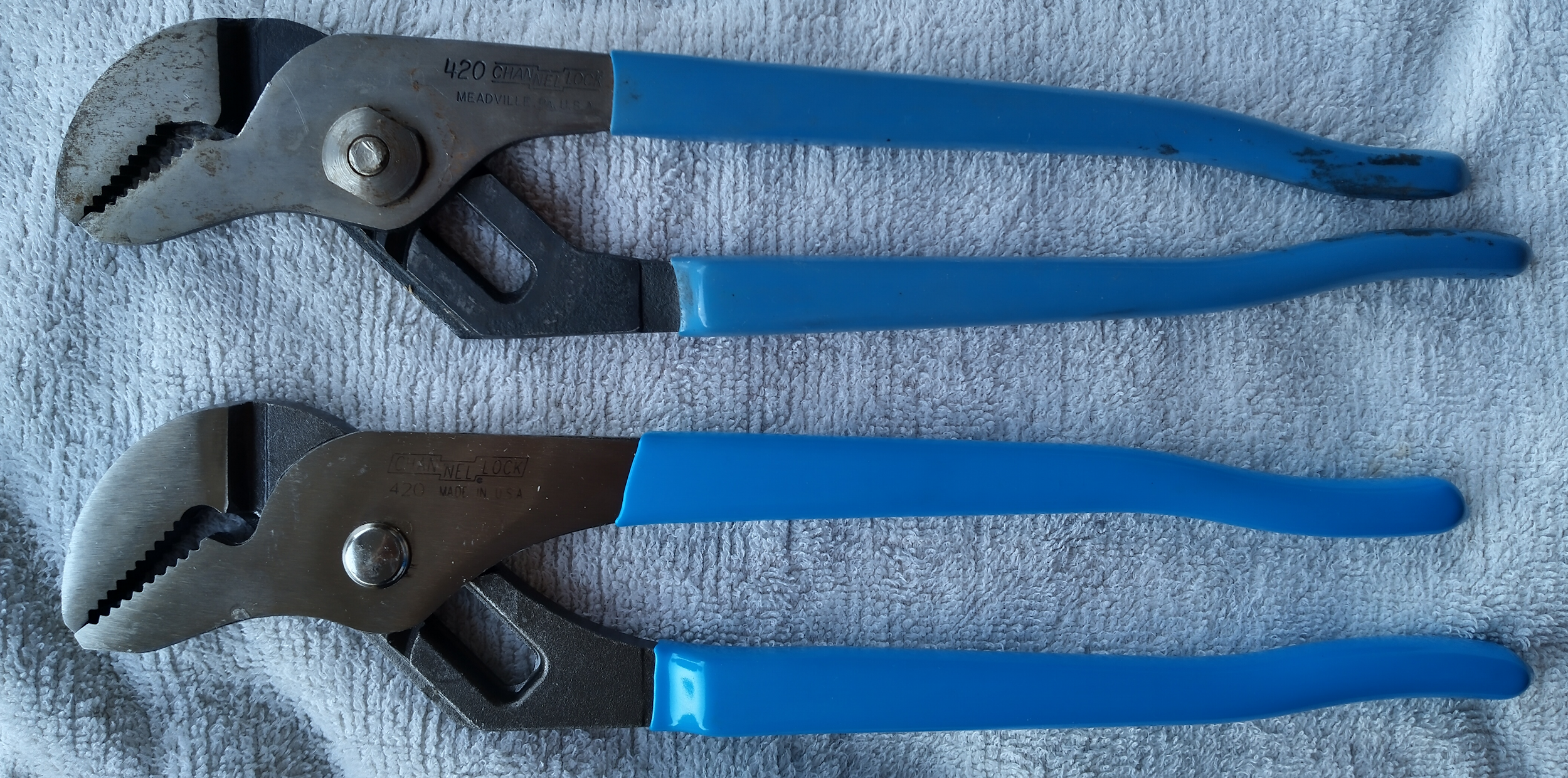I hate cheap tools.
You don’t have to mess up a workpiece with one, break one, or hurt yourself with one (or all three at the same time!) very often to form this opinion pretty powerfully.
Now I’m not saying you need to run down the Snap-on or Matco truck every time you need something. But I would suggest the box store house brands (Kobalt at Lowe’s; Husky at Home Depot) or Craftsman as a minimum. (I might be making friends with Klutch tools as well. That’s the house brand at Northern Tool. We’ll see.)
I’m hardly a master mechanic or handyman, but thanks to a patient and understanding father and father-in-law, the generosity of the online community, and a lot of trial and error, I’m reasonably competent around the house and in the garage. And jobs go better, more reliably, and more pleasantly with high-quality tools.
I’ve built a decent tool bag to carry in the truck by gradually upgrading my home tools. Generally, I’ll have something that is used-but-not-worn-out, buy another one (or something better), put the new one in my home toolbox, and the old one in the truck.
I didn’t do that today with my Channellock 420 pliers, though.
The 420 is a classic. It’s a pair of 9.5″ tongue & groove pliers. Some people call them water pump pliers. Most people I know just call them “Channellocks.” Even though Channellock makes a lot of other tools, their brand has unquestionably become attached to this particular type. This pair of pliers is a fantastic plumbing and automotive standby. You’ll find it in nearly any serious toolbox.
I put the new one in the truck this time, though. See, the one in my home toolbox used to belong to my maternal grandfather.

I don’t remember Papaw working on much stuff around the house, but then he probably wouldn’t have done that while I was visiting, would he? I love using them and knowing he did too.
I expected superficial differences in the stamping that shows the manufacturer, model number, and so forth, but thought the tools would be otherwise identical (or nearly so). They’re not. They’re significantly different, actually. The hinges are different—likely a product of CAD/CAM—and the newer tool has deeper jaws. Also, both of these tools are minimally set and fully closed. Look at the difference in the handles, and the resulting space differences between them.
I have no way of knowing how old Papaw’s pliers are, but he’s been gone almost 30 years. For all I know he had them that long before he died. They’ve solved a lot of problems for me. I’m sure they’ll continue to do so.
You might also like:
- BoWilliams.com recommends Krazy Glue with the precision tip
I was repairing something this weekend and was reminded of something I wrote here 13+ years ago: “Fi… - Borrowing my father-in-law’s wrench
I went to Lea’s mom’s yesterday to put together some Christmas presents. I didn’t take any tools, an… - Our Sears extended warranty
So I stayed home today to make sure someone was here when the Sears repairman showed up to have a lo… - I’m sorry, you have the wrong number
I can remember every telephone number I’ve had since I was 2 years old–home, work, and mobile. Ther… - Pockets of order
I can’t say I’ve never been a slob, because small children are universally and thoroughly disgusting…
